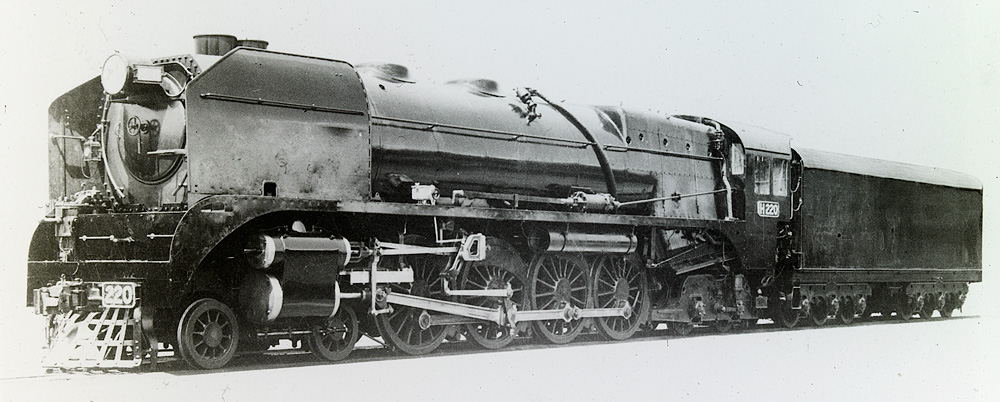 |
 |
||||
| H class steam locomotive | |||||
| wheel arrangement: 4-8-4 | |||||


ABOVE: H 220 in "as built" condition
| Number in Class | 1 |
| Construction period | 1941 |
| In service | 1941 - 1956 |
| Where built | Newport |
| Tractive effort | 55,000 lbs @ 85% boiler pressure |
| Where built | Newport |
| GENERAL ARRANGEMENT | |
Whilst H 220 came to be known as "Heavy Harry" by the public and railfans it appears that this name was not in common use by employees.
BELOW: Early in its life the two domes were covered with one large dome

BELOW: H 220 during construction at Newport, 1941



ABOVE: Although designed as a passenger loco H 220 spent most of its life hauling North East line fast goods trains
however it ocassional got a run on passenger trains as seen here on what looks like a down Geelong pass
arriving Newport.
Official VR Photo.
BELOW: An overhead view of the H at Wodonga circa 1953.
photo courtesy Doug Colquhoun


ABOVE: The famous "into the night" photo was taken at Violet Town, (the signal you can see is Violet Town's down home departure.) The photo was actually taken during daytime and some darkroom wizardry produced this stunning photo, perhaps the most famous photo of "Heavy Harry"


ABOVE: Happily Harry was spared from the scrappers torch and has lived at the Newport museum after his very short career. photo circa 1960.
